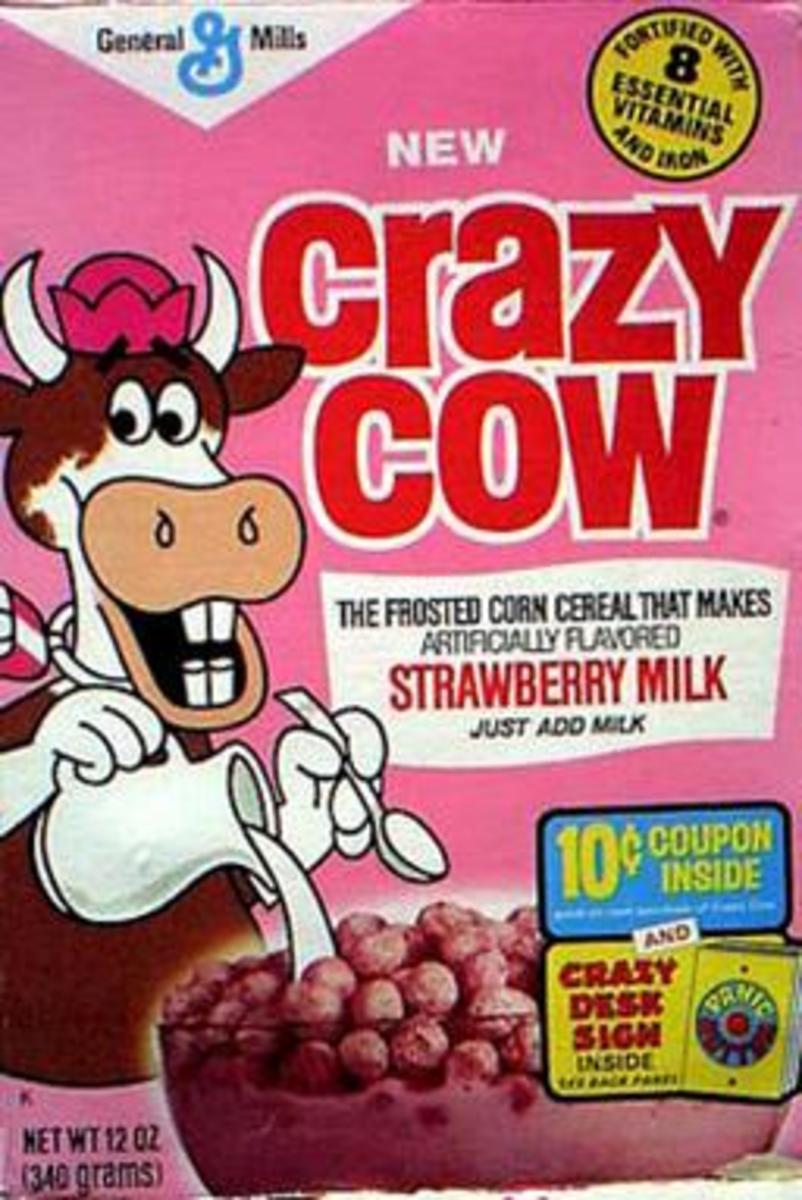The Health Food that Changed America's Breakfast Habits: The Kellogg Brothers
Early advertisement for Corn Flakes
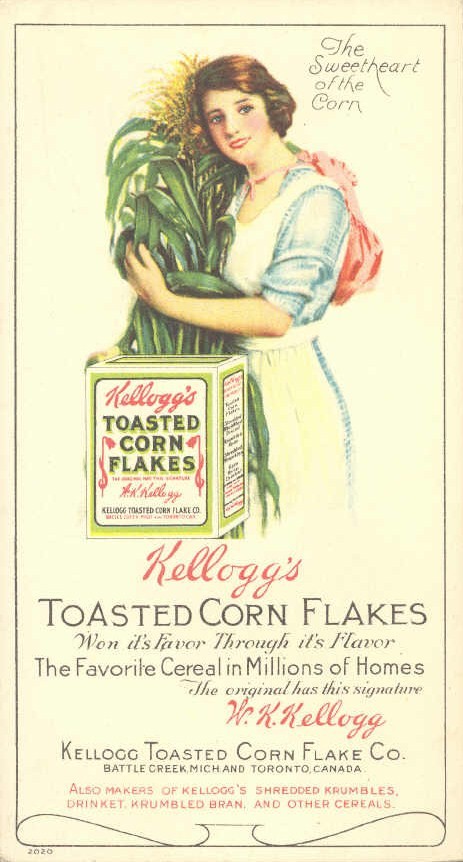
A bit of genius and a bit of craziness led to a major food discovery.
A number of ironies accompany the invention of corn flakes and subsequently dry breakfast cereal. John Harvey Kellogg thought there might be a relationship between nutrition and health. He was a doctor and an important member of the medical community in Michigan. He was also a vegetarian due to the fact that he was a member of the Seventh Day Adventist Church.
Nutrition science was starting to be known at the turn of the 20th Century. Some studies found that good nutrition might prevent a number of common ailments of the time. These discoveries also led to food fads. It seems that some indications of health improvements led to unproven conclusions about health and how it was affected by food. Even the reputable experts such as Dr. John Harvey Kellogg were convinced of it.

Vegetarianism Influence
He was born in Tyrone, Michigan in 1852. The family converted to the Seventh day Adventist religion in 1864. Thus the family moved to Battle Creek, Michigan, which was the world headquarters for the church. Among their beliefs was vegetarianism and they abstained from meat, poultry, and fish. Some groups used eggs and milk products.
John went to work in printing at the age of twelve and worked his way up to editorial assistant in the Adventist publishing house.
At sixteen, he taught school in rural Michigan. After high school he enrolled in a teacher-training program at Michigan State Normal School in Ypsilanti. In 1872 the church sent him to Dr. Russell Trail’s Hygeio-Threrapeutic College in Florence Heights, N.J. He was disappointed in the teachings there and enrolled in the Medical school at the University of Michigan. In 1875 at the age of 23 he received his M.D. His senior thesis was based on disease being a natural defense system of the body.
John Harvey Kellogg
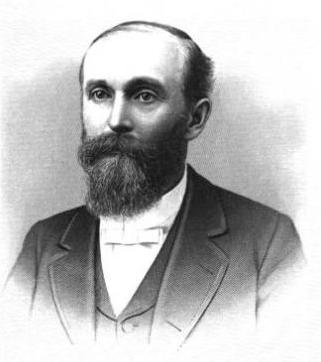
The Big discovery
He continued working with the Adventist publishing house and became editor of their monthly magazine Good Health. A year after getting his degree he became superintendent of the western Health Institute, which he later changed to the Battle Creek Sanatorium. He was able to ably his ideas there.
John and Will Kellogg came across their process for corn flakes in a serendipity manner. Will left some cooked wheat to sit while they took care of something important in the sanatorium. Upon return they found the wheat had gone stale. The processed it anyhow hoping to obtain long sheets of dough by forcing it through the rollers. Instead of sheets of dough they found flakes, which they decided to toast and found it appropriate to feed to patients. It proved popular with the patients. On May 31, 1894 they filed a patent for “Flaked cereals and Process of Preparing Same’ under the name Granose.
John Harvey Kellogg
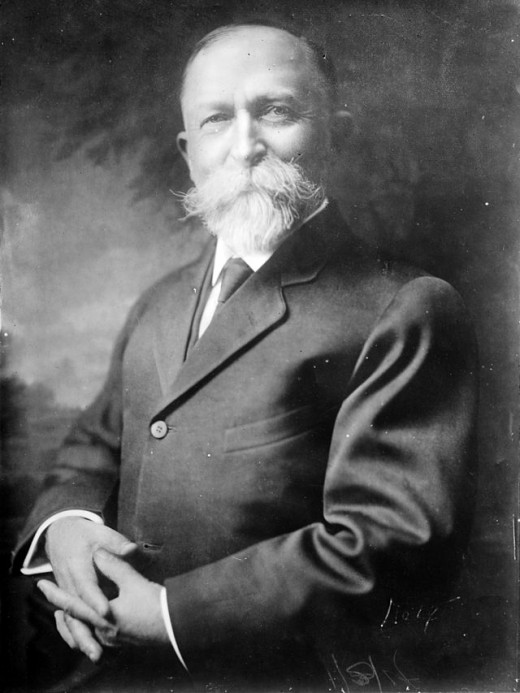
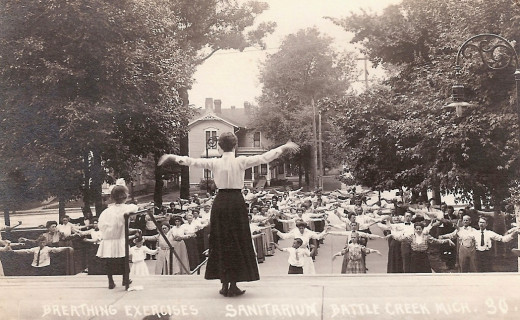
Healthier Breakfast
In 1897 the brothers started the Sanitas Food Company for the production of whole grain cereals. . At that time those who could afford it ate eggs and meat while the poor ate porridge, farina, gruel and other boiled grains.
John had worked with his brother Will for several years but started to disagree on policies, for example Will used sugar in the process in browning the flakes and make it more appealing to customers.
Will, the business manager of the sanatorium decided to try mass marketing the new food. He was the one that started the Kellogg Company.
Will’s marketing included offering a premium with two boxes of cereal. The Funny Jungleland Moving Pictures booklet was offered for the next twenty-two years.
Adventist disagreements
John got overwhelming support for his work from the Adventist until they started questioning some of his programs twenty years later. There was a split and the Adventist excommunicated him in 1907. There was conflict over control and ownership of the sanatorium He had developed a food laboratory and that is where the process for preparing cornflakes was developed and use as breakfast cereal encouraged.
John advocated vegetarianism, favored low protein, and high fiber diets. These are popular now. He also favored calisthenics and open air sleeping.
He wrote a number of books and articles, which was one means of support along with his work as a surgeon. He was a highly thought of surgeon even admired by the Mayo brothers.. His best-known book is The Miracle of Life in 1904.
Competition
C.W. Post who started a rival company was a patient at the Battle Creek Sanatorium. There are other brands now, store brand and generics. But it all started with an accidental discovery.


